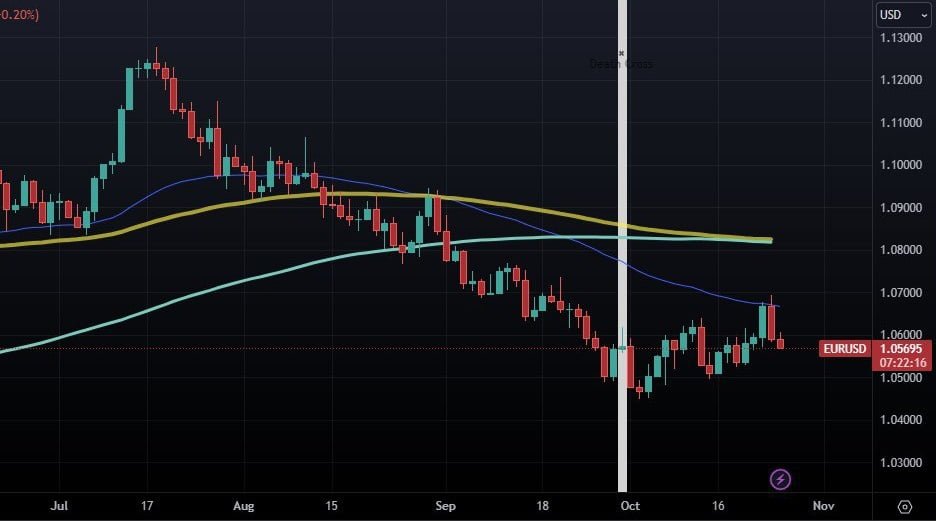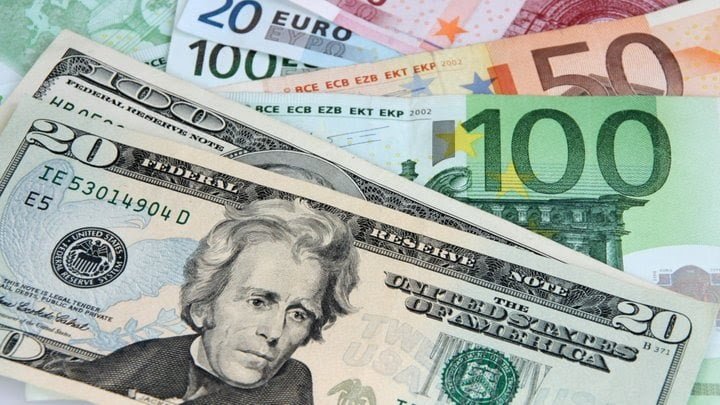Contents
EUR/USD Declines back into a bearish posture after retesting the 1.0600 level. Propelled by a positive German IFO survey during Wednesday’s European trading session. The renewed strength of the US Dollar describes this decline, and cautious restraint characterizes market sentiment as it awaits crucial forthcoming US economic data releases.
Notably, the Relative Strength Index (RSI) on the 4-hour chart has descended. Making approaching the pivotal 50 threshold, signifying that the bearish momentum remains yet to be fully realized. The 200-period Simple Moving Average (SMA) holds significance as a crucial inflection point for the EUR/USD pair. Should the pair manage to consolidate above this threshold, it may incite interest from prospective buyers. Potentially culminating in an ascendant movement towards the 1.0640 level (representing the 38.2% Fibonacci retracement of the most recent downtrend). Followed by the 1.0700 milestone (a static level and the 50% Fibonacci retracement).
Also Read: Bond Market Swing causes Stock Market Worries
Conversely, on the downside, crucial support is places at 1.0570, where the 100-period SMA converges with the 23.6% Fibonacci retracement level and an ascending trend line. A four-hour closure below this critical juncture could prompt the entry of technical sellers into the market. With 1.0520 (another static level) potentially providing interim support before reaching the psychological threshold of 1.0500. That also serves as static support.

EUR/USD Declines Amid Stronger Dollar and ECB Caution
On the preceding Tuesday, the EUR/USD Declines and incurred significant losses due to a strengthening US Dollar. Subsequently, the pair has entered into a phase of consolidation, oscillating around the 1.0600 level. Technical analysis indicates a lack of enthusiasm among potential buyers, and trading activity is poised to remain subdued in the lead-up to the impending monetary policy announcements of the European Central Bank (ECB), scheduled for Thursday.
The release of S&P Global’s PMI surveys on Tuesday underscored the sustained robustness of economic activity in the United States, particularly when contrasted with the Eurozone and Germany. Consequently, the US Dollar Index, tracking the performance of the USD against a basket of six major currencies, registered a gain exceeding 0.5%. Which successfully retracting the losses incurred the previous Monday.
Furthermore, early Wednesday witnessed the US Dollar maintaining its strength amid a shift towards negative risk sentiment, as indicated by the decline in US stock index futures.
Euro Gains from German IFO and Upcoming US Data
Simultaneously with EUR/USD Declines Below 1.0600 , economic data emanating from Germany showcased improvements in the IFO – Current Assessment Index for October. Which ascended to 89.2 from September’s figure of 88.7. Additionally, the Expectations Index exhibited an upturn to 84.7, surging from 83.1 in the same timeframe. These figures have played a role in mitigating the extent of the Euro’s losses.
The forthcoming release of September’s New Home Sales data in the United States bears potential significance. It is worth noting that in August, New Home Sales witnessed a noteworthy 8.7% decline. A similar substantial decrease in this metric could exert a detrimental influence on the US Dollar, although it is prudent for market participants to exercise circumspection and avoid significant positions in anticipation of the impending ECB event.
Do you need help in finding the best crypto exchange for your needs?
Click here: The Best Crypto Exchange Finder
Disclaimer:
Please note that this article serves solely for informational purposes. As such, it is not financial advice. We strongly advise readers to conduct thorough research and consult with financial professionals before making any investment decisions.








